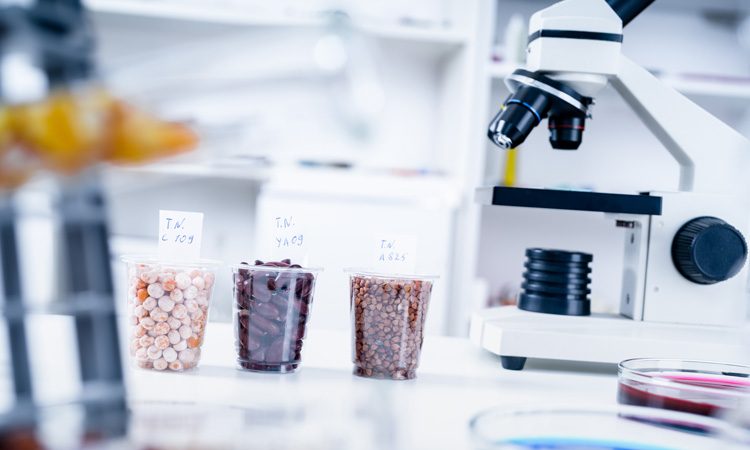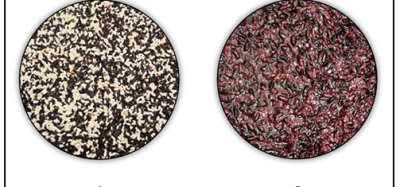French ban on food additive contains flaws, study suggests
- Like
- Digg
- Del
- Tumblr
- VKontakte
- Buffer
- Love This
- Odnoklassniki
- Meneame
- Blogger
- Amazon
- Yahoo Mail
- Gmail
- AOL
- Newsvine
- HackerNews
- Evernote
- MySpace
- Mail.ru
- Viadeo
- Line
- Comments
- Yummly
- SMS
- Viber
- Telegram
- Subscribe
- Skype
- Facebook Messenger
- Kakao
- LiveJournal
- Yammer
- Edgar
- Fintel
- Mix
- Instapaper
- Copy Link
Posted: 1 October 2019 | Sam Mehmet (New Food) | No comments yet
MSU and UNMC research team suggest French government-funded study that claims common food additive to be unsafe lacked appropriate research.


Michigan State University (MSU) and University of Nebraska Medical Center (UNMC) researchers are refuting an earlier French government-funded study that claims titanium dioxide, a common food additive used worldwide, causes digestive inflammation and lesions in rats.
Results of the French study have led leaders of the country to prohibit all food products with the additive from being placed on the market starting January 2020. France’s ban could have implications for other countries, including the US.
Food-grade titanium dioxide, or E171, is a naturally occurring mineral used as a whitener and brightener in foods and medications. A lower-grade version of E171 is also found in cosmetics and sunscreen.
According to the MSU research, the French study contained “flaws” and there was no evidence to suggest negative health effects after replicating and correcting testing methods used in the previous research.
One suggested flaw was the fact that French scientists did not test the rats based on how humans are usually exposed to the food additive.
“We designed our study to investigate E171 exposure through food, the most common way people consume the ingredient,” said Norbert Kaminski, lead author and Director of MSU’s Center for Research on Ingredient Safety. “By focusing on real-life exposure, our study provides much needed context and nuance to the food safety conversation.”
According to Kaminski and Co-Investigator Sam Cohen from UNMC, the French researchers administered E171 in the rat’s drinking water. Since the additive does not dissolve in water, it was said to be similar to drinking water with sand in it.
“This type of exposure in humans just is not relevant because of its insolubility,” Kaminski argued.
The researchers also mentioned that other studies have tested the substance through inhalation and direct injection, which are also considered uncommon ways in which people are exposed to the food additive.
While the US Food and Drug Administration (FDA) and the European Food Safety Authority (EFSA) recognise the ingredient as safe, E171 has come under intense scrutiny by France because of these previous studies.
Another suggested oversight noted by Kaminski and Cohen, was that the rats were pre-treated with the chemical dimethylhydrazine, or DMH, prior to E171 exposure. “The problem is there were no experimental control groups in the French study that looked at just the effects of DMH,” Kaminski said.
DMH is a potent genotoxicant, which can alter DNA, and is why the lesions and inflammation occurred, according to Kaminski and the research team.
To remove any possibility of experimental bias, the MSU and UNMC study was conducted in a blind manner over a seven-day and 100-day period. This meant that no one on the investigative team knew which rats were exposed to E171 and which tissues came from the subjects until the analysis of all samples was completed.
“It was important that the study was conducted this way and went through a rigorous peer-review process to take away any doubts,” Kaminski said.
While much of the research was funded by MSU, it partially was funded by the Grocery Manufacturers Association, the Titanium Dioxide Manufacturers Association and the International Association of Color Manufacturers.
Kaminski has no plans to study the additive further and has not indicated future studies that will continue to address the E171 food safety conversation.
Related topics
Flavours & colours, Food Safety, Health & Nutrition, Ingredients, Regulation & Legislation, Research & development
Related organisations
European Food Safety Authority (EFSA), Michigan State University (MSU), University of Nebraska Medical Center (UNMC), US Food and Drug Administration (FDA)









